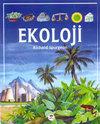Production Optimisation of a Land-Based Trout Farm and the Reduction of its Environmental Effects
Q3 Environmental Science
引用次数: 0
Abstract
In this study, certain water quality parameters (water temperature, dissolved oxygen (DO), pH, total inorganic nitrogen (TIN), phosphate (PO4), nitrite (NO2), nitrate (NO3), ammonium (NH4), and (BOD5) in the effluents and the efficiency of the treatment systems for eliminating wastes at a commercial trout farm with a capacity of 10 tons/year in Izmir (Kemalpasa) were examined. The DO, temperature, pH, TIN, PO4, NO2, NO3, and BOD5 measured, were different in the outlet waters when compared with the inlet waters (p<0.05). The settling basin did not reduce the TIN and PO4, on the contrary, it caused an increase in the nitrogen (N) up to 19.9% and phosphorus (P) up to 20.30%, while the wetlands reduced the N, P, and BOD 5 up to 53.2%, 58.2%, and 36.5%, respectively (p<0.05). According to the chemical and biological methods, the averages of the TIN and P loads for one tone of cultured trout without treatment were estimated to be were 80 kg and 7 kg, respectively. The annual TIN load of this trout farm was estimated to be 21.3 kg while the TP load was 2.9 kg for one tone of cultured trout when the treatment efficiency was taken into account. The microbiological analyses conducted with the effluent waters showed that the rate of aerobic mesophilic bacteria was found to be high in the summer but low in the winter. It was also detected that the coliform group bacteria were present in the environment in the summer while their occurence was with-in standards in the winter. Interactions of the 9 water quality parameters were identified through the linear regression analysis in order to reduce the environmental effects of the facility DO= 28.296 – (0.248 × BOD 5 ) – (2.948 × pH) + (0.189 × temperature) + (0.851 × inlet water) + (0.163 × winter) (R2=0.912). According to this model, the DO values were increased by the temperature, inlet water and the winter season while reduced by the BOD5 and pH. The dissolved oxygen content in the wetland outlet water was measured as being high because of the nutrient and temperature rises which boosted photosyntesis. It was concluded that using mechanical settling methods were inadequate to minimise the nutrients released into the receiving water body so wetlands should be constructed in such a way as to receive the flow of effluents from the trout farms. As a result the quality of water used by the facility has no adverse impact on the aquaculture and environmental ecosystem.一个陆上鳟鱼养殖场的生产优化及其对环境影响的减少
在本研究中,研究了伊兹密尔(Kemalpasa)一个10吨/年商业鳟鱼养殖场出水中的某些水质参数(水温、溶解氧(DO)、pH、总无机氮(TIN)、磷酸盐(PO4)、亚硝酸盐(NO2)、硝酸盐(NO3)、铵态氮(NH4)和BOD5)以及处理系统的废物处理效率。出水水体的DO、温度、pH、TIN、PO4、NO2、NO3、BOD5的测定值与进水水体比较差异有统计学意义(p<0.05)。沉降盆地没有降低TIN和PO4,反而使氮(N)和磷(P)分别增加了19.9%和20.30%,而湿地使N、P和BOD 5分别减少了53.2%、58.2%和36.5% (P <0.05)。根据化学和生物方法,估计未经处理的单株养殖鳟鱼的TIN和P负荷平均值分别为80 kg和7 kg。在考虑处理效率的情况下,该鳟鱼养殖场每年的TIN负荷估计为21.3 kg,而每吨养殖鳟鱼的TP负荷为2.9 kg。对出水进行微生物学分析表明,夏季好氧嗜中温菌率高,冬季低。在夏季环境中还检测到大肠菌群,而在冬季则在标准范围内。通过线性回归分析确定了9个水质参数之间的相互作用,以减小该设施的环境影响。DO= 28.296 - (0.248 × BOD 5) - (2.948 × pH) + (0.189 ×温度)+ (0.851 ×进水)+ (0.163 ×冬季)(R2=0.912)。根据该模型,温度、进水和冬季增加了DO值,而BOD5和ph降低了DO值。由于营养物和温度的升高促进了光合作用,湿地出水溶解氧含量较高。结论是,使用机械沉降法不足以最大限度地减少释放到接收水体中的营养物质,因此湿地应该以这样一种方式建造,以便接收来自鳟鱼养殖场的废水。因此,该设施使用的水质对水产养殖和环境生态系统没有不利影响。
本文章由计算机程序翻译,如有差异,请以英文原文为准。
求助全文
约1分钟内获得全文
求助全文
来源期刊

Ekoloji
环境科学-生态学
CiteScore
1.10
自引率
0.00%
发文量
0
审稿时长
>12 weeks
期刊介绍:
Cessation. Ekoloji is an international journal that focuses on papers that report results from original research on all disciplines engaged in the field of environmental research. We welcome articles that cover the entire spectrum of environmental problems and environmental pollutants, whether chemical, biological or physical. Its coverage extends to all environmentally related issues: air and water pollution, solid waste, noise, recycling, natural resources, ecology and environmental protection. It includes articles on basic and applied environmental pollution research, including environmental engineering and environmental health. All types of pollution are covered, including atmospheric pollutants, detergents, fertilizers, industrial effluents, metals, mining wastes, oil, pesticides, plastics, radioactive materials and sewage. It also includes research papers on ecological and environmental issues such as climate change, biodiversity. The primary criteria for publication are scientific quality and ecological/environmental significance.
The journal will be read and contributed to by biologists, applied ecologists, environmental scientists, natural resource specialists, environmental engineers, environmental health specialists, agro-ecologists, veterinaries, agricultural engineers, landscape planners and designers. The journal welcomes full "research papers" and short "research notes", only in the English language.
 求助内容:
求助内容: 应助结果提醒方式:
应助结果提醒方式:


